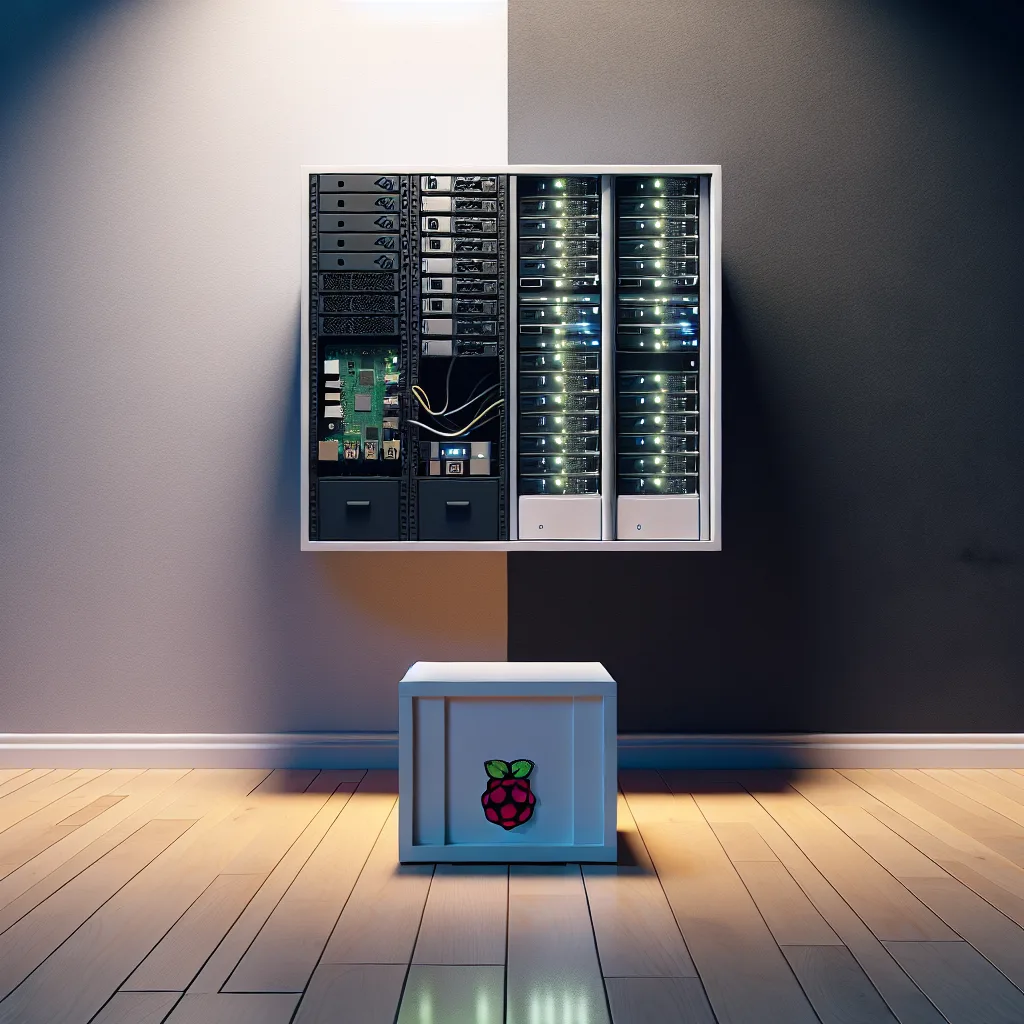Discover the common journey of a home lab enthusiast, from a simple IKEA cube setup to a full-blown wall-mounted server rack. It happens faster than you think.
It always starts with something small.
\n\nFor me, it was a single Raspberry Pi. For a friend, it was an old laptop he wanted to turn into a file server. It’s the little project you start on a whim. The one you think will be simple, clean, and tucked away in a corner.
\n\nAnd often, it starts in an IKEA cube.
\n\nIt’s the perfect beginning. It’s cheap, looks clean, and hides the mess. You set up your first device, run a few simple programs, and feel pretty good about it. Your own little slice of the cloud, right at home. But then, the itch begins.
\n\n## The “What If?” Phase
\n\nYou start thinking, “What if I added more storage?” or “What if I ran another service?”
\n\nThat one little server was great, but now you want to run Plex for your movies, Home Assistant for your smart devices, and maybe a Pi-hole to block ads. That single IKEA cube starts to feel a little cramped.
\n\nSo you get another one.
\n\nNow you’ve got a stack. Two cubes. Maybe one for the server and one for the networking gear. The cables are starting to look a little more… creative. But it works. You’ve got more power, more storage, more grunt. You’re happy. For a while.
\n\n## When Furniture Isn’t Enough
\n\nThis is the tipping point. It’s the moment you realize you’ve outgrown your clever furniture solution.
\n\nHeat becomes a problem. The back of those cubes doesn’t have great airflow, and your little machines are starting to run hot. Cable management goes from being a fun puzzle to a genuine nightmare. You need to unplug one thing and suddenly three other things get pulled out with it.
\n\nYou start looking at what the “serious” people use. And you see them: wall-mounted server racks.
\n\nSuddenly, you’re measuring wall space and looking for studs. What started as a small, contained hobby is now about to become a permanent fixture in your home. You’ve evolved. You’re no longer just hiding a computer in a box; you’re building a proper command center.
\n\nGoing for a rack is a big step, but it solves a lot of problems:
\n\n* Airflow: Racks are open and designed to keep things cool.
* Space: You can fit more gear, neatly and securely.
* Management: Everything is accessible. No more digging around in a dark cube.
\n\nIt’s a beautiful, organized, and slightly terrifying evolution.
\n\n## The Work Is Never Really Done
\n\nHere’s the secret: you’re never really finished.
\n\nOnce the rack is on the wall, you start thinking about the next upgrade. And if you’re running all this important stuff, you’ll quickly realize you need to protect it.
\n\nThis leads to the next logical, and crucial, purchase: a UPS (Uninterruptible Power Supply).
\n\nI’ve seen people use smart plugs to monitor power, and they live in constant fear of accidentally tapping the wrong button in an app and shutting everything down. It’s a terrifying thought. A UPS solves this. It’s a big battery that sits between your gear and the wall outlet. If the power goes out, it keeps everything running long enough for a safe shutdown. It also protects your expensive hardware from power surges. It’s not just a nice-to-have; it’s peace of mind.
\n\nThis whole journey—from a single box to a wall of tech—is a familiar one. It’s a story of curiosity, of solving problems, and of a hobby that has a tendency to get delightfully out of hand. If you find yourself measuring your wall for a server rack, don’t worry. You’re just following a well-worn, and very rewarding, path.
